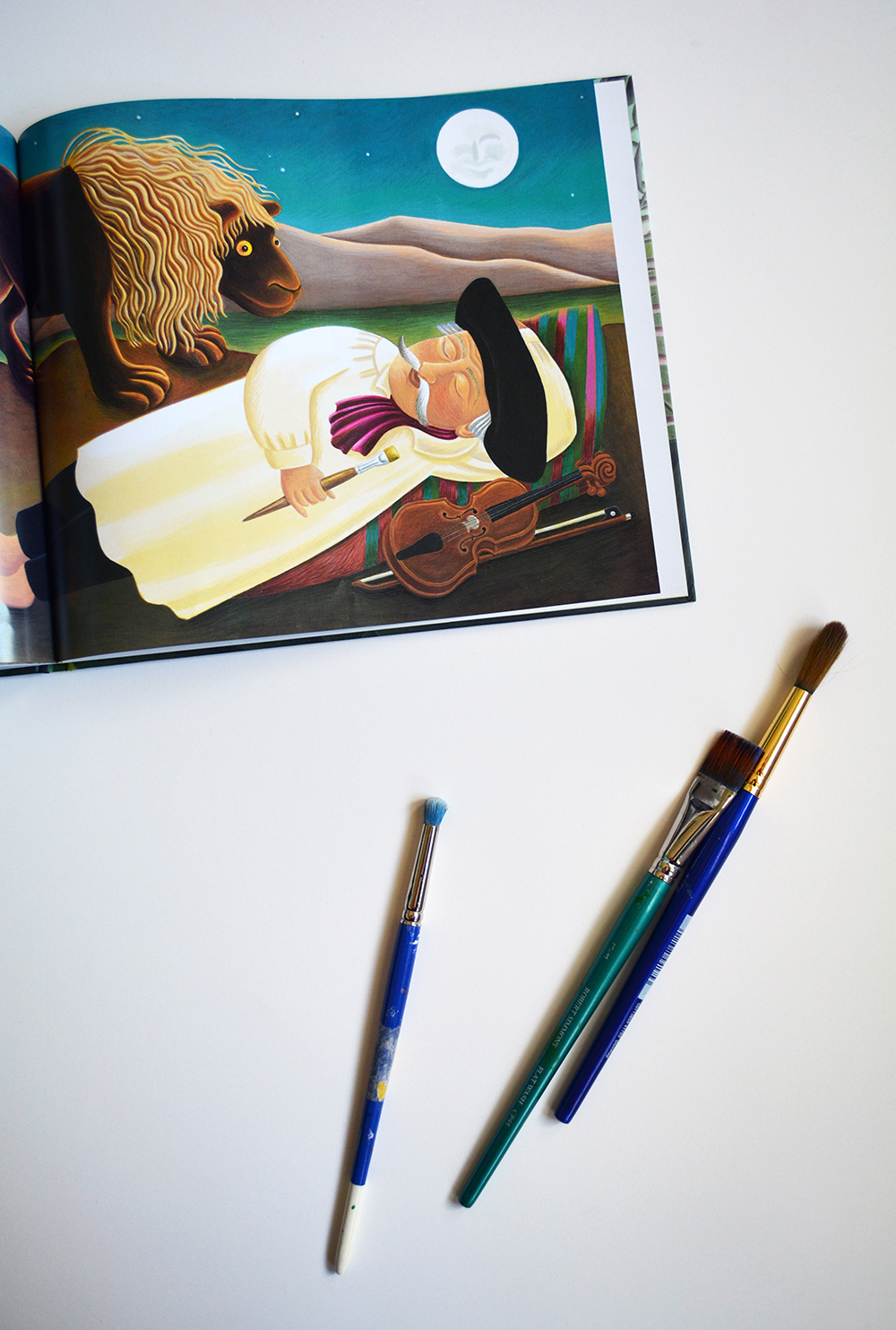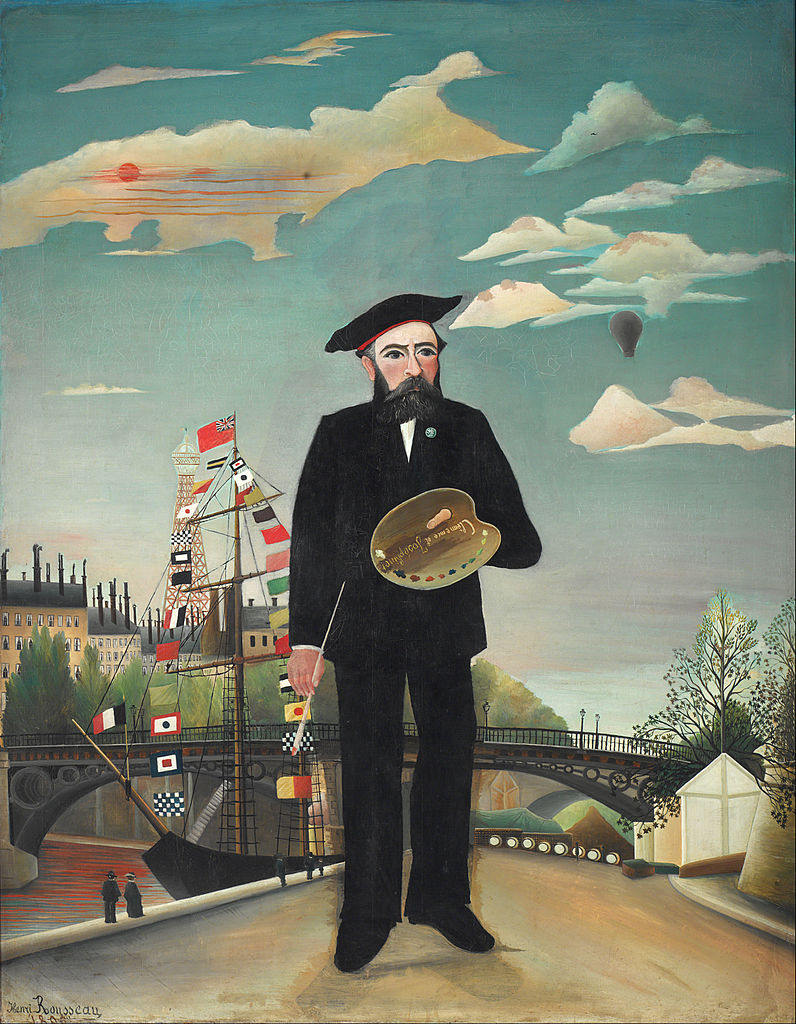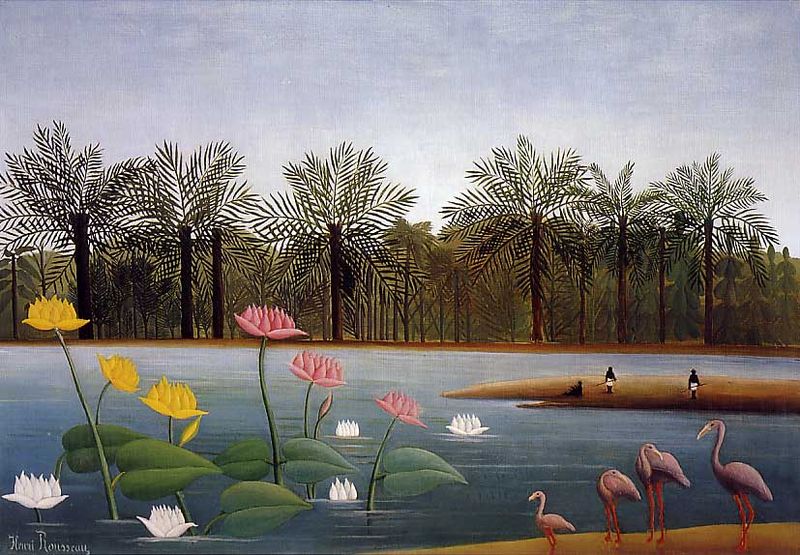
Whether we are children or adults, we often come into a study of art really quite intimidated by it all. The glorious masters and their astounding reproductions of the natural world have left us breathless, and quite convinced that only someone who can paint a scene indistinguishable from reality can be considered an artist.
But that’s not true.
Art isn’t always photorealistic.
[We are a participant in the Amazon Services LLC Associates Program, an affiliate advertising program designed to provide a means for us to earn fees by linking to Amazon.com and affiliated sites.
As an Amazon Associate I earn from qualifying purchases.]
Why is the human inability to accept new kinds of art so common? Why were so many now-beloved artists dismissed outright at first, only to have the art critics reverse their position later? What is it that people fundamentally misunderstand about art — over and over and over?
When I taught art history at a homeschool co-op, I did not require students to replicate reality when they created. Before you assume I’m going all Cy Twombly on you, think about it. You don’t hear anyone arguing that a Monet isn’t art, even though his waterlilies are a far cry from a photographic representation.
The truth is, most art takes liberties with reality.
Even paintings in no danger of being confused with modern abstraction, like The Lady of Shallot, are not an exact photocopy of nature. And neither is much of ancient art, romanticism, sculpture, impressionism, or any number of other art styles.
I often encounter children (and adults!) who believe if an artist is drawing an apple, the final drawing needs to be indistinguishable from a photo of an apple. While this is one style of art, it’s not the only way.
Freedom to interpret, not copy, a scene is an especially important point to emphasize to budding artists who struggle with perfectionism, become easily discouraged, or are just still working on fine motor skills and hand-eye coordination:a finished art piece does not need to be a duplicate of the object the artist has attempted to represent.
RECOMMENDED READING: The Fantastic Jungles of Henri Rousseau by Michelle Markel, illustrated by Amanda Hall (Eerdmans Books for Young Readers)

Artists convey feeling, mood, emotion and meaning through color, form, line, and any number of other constructs, not just through photorealism.
(And if the painting or sculpture represents a feeling or an idea, there’s not even a concrete, pictorial reality to compare!)
After all, art is intensely individual.
While there are unchangeable laws of physics governing light, shadows, and shape, the truth still remains that no two masters, given the same scene, would have put it to canvas the same manner.
When we are all creating together, I look for opportunities to highlight the incredible, creative differences between my student’s projects. I emphasize the little details which make each piece of art — and each young artist — unique.
Sometimes, when a student begins to struggle with comparison, I’ll pull out one of my art books, and open up to different works of art — for example, Klimt’s Rosebushes under the Tree, Rembrandt’s The Three Trees, Van Gogh’s Almond Blossom, and Crola’s Oaks — and ask a series of questions reinforcing individuality and reiterating how wonderful it is that there is no one way to paint a tree.
Do these images all show trees?
Do these trees all look the same?
Did the same artist always paint a tree the same way? (For more emphasis, I will ask them look at the difference between Klimt’s Rosebushes under the Tree and the Tree of Life, or Van Gogh’s Almond Blossom versus his Olive Tree series. )
I tell my students, it’s the same for each of them. Their art will not always match the art of the person sitting next to them, and that’s wonderful! Imagine a world in which everyone just imitated each other, never straying from what was expected or accepted. How boring and uninteresting would that be?
Ultimately, I want all kids to recognize how art allows individuals to express the same message in a very different way.

Okay, but why does Henri Rousseau matter?
Henri Rousseau embodies these ideals of individualism quite powerfully. He wasn’t like any other painter of his time, and his work was soundly rejected. Why? Because he showed us the world in a very different way. He didn’t paint the way people expected him to, and critics didn’t like that.
[Click to download my FREE mini-biography printable of Henri Rousseau for grades K-3]
He had no artistic training, did not come from a creative background, and didn’t take up art into he was in his forties.
When he did begin to paint, he didn’t paint what he knew. Instead, he painted things he’d never seen. He never left France, yet painted elaborate and imaginary jungles.
He looked at houseplants and imagined them double, triple, and quadruple their size, and these became his jungle foliage.
He thought about what animals might roam far away lands, and these partly-fictional creatures became his Surprised! tigers and exotic monkeys. People called them “grotesque”.[1]
He was mocked when he entered the art scene — and yet, kept on painting.
He was laughed at — and yet, kept on painting.
People looked at his work and told him it seemed as though he painted with his feet —and yet, he kept on submitting his paintings to galleries, year after year.
He was belittled by the establishment. He was told to change his style — and yet, kept on painting.
“‘The place rocks with laughter’, one critic wrote” [2] after seeing Rousseau’s paintings in a public gallery — and yet, Rousseau never gave up.
Today, of course, no one is laughing, and the art world can’t get enough of his dreamlike botanical works and quirky tropical animals.

Teaching a Henri Rousseau Unit for Kids
“The Fantastic Jungles of Henri Rousseau” by Michelle Markel and illustrated by Amanda Hall (Eerdmans Books for Young Readers) will introduce kids to many of Rousseau’s most famous paintings. Perhaps most importantly, this picture book will offer a great lesson in individuality, empathy, and perseverance. Several of my more sensitive students were moved to compassionate tears by Rousseau’s life story — and then buoyed, encouraged, and motivated to keep on painting!
Every page is saturated edge-to-edge in Rousseau’s trademark style. The publisher’s book trailer, linked above, is really wonderful as well.
How to Paint a Surprised Tiger Like Henri Rousseau
Invite your students into the magical world of Rousseau’s jungles with this art project.
Supplies Needed:
- drawing pencil and eraser
- watercolor paper
- watercolor paints / pots
- paintbrush(es)
- small whiteboard and dry-erase marker to lead guided drawing (optional, for a classroom setting with younger students)


Each of my art history classes also includes — of course! — a hands-on project. After reading the mini biography of Henri Rousseau, and enjoying “The Fantastic Jungles of Henri Rousseau” picture book by Michelle Markel and illustrated by Amanda Hall (Eerdmans Books for Young Readers), we created our very own tiger hiding in the jungle during a sudden rainstorm.
With Rousseau’s iconic Surprised! painting as the inspiration, I led the students in a guided pencil drawing on watercolor paper.
(Not sure how to execute a guided drawing? A white board works well. You draw a stroke on the white board, and have the students draw the same stroke on their paper. Since young students have a hard time translating a sense of scale from a huge whiteboard to a small 8.5×11″ or 9×12″ space, I find that using a hand-held white board approximately the same size as the students’ papers makes for a less frustrated class overall. We used Art Projects for Kids’ excellent “How to Draw a Tiger Face” tutorial for guidance.)
Rather than simply mimic of the sample drawing, I asked each child to draw the facial expression however they wished, after thinking about how a tiger caught in a storm might feel. Would the tiger be worried? Elated? Indifferent?
Once the students had sketched out their tiger, we turned to watercolor, using the simple concept of light to dark — filling in the tiger with yellow, accenting with orange, then red, and finally filling in the dark brown / black areas — before adding jungle foliage and grass. Since grass blades are generally wider at the bottom and narrower at the top, some students might have a better time at this if they flip their painting upside down. This way, they’ll be able to direct their brush strokes from top down, rather than trying to paint from the bottom of the page upwards.
If kids are willing to let the unexpected happen, they can add a drippy rain storm (there’s slanted silvery gray-green rain throughout Surprised!). Paint the desired storm color across the sky, then hold the art upright and allow the watery paint to “rain” down on the tiger and greenery. Not everyone will be willing to let the paint run or even want to paint a storm — and that’s okay!

It’s really fun to teach little ones about Rousseau! He’s such an example of perseverance in the face of odds. I especially think Rousseau can encourage kids who are hesitant artists, kids who doubt their own abilities, or kids who have perfectionistic tendencies.
Henri Rousseau never stepped foot in a jungle, but didn’t let that stop him from painting jungles.The animals in his art didn’t look the animals on anyone else’s canvas, but he wasn’t bothered by it. The images he created were flatter and less 3D than the art his peers were producing — but he kept on painting.


Rousseau’s imaginative, stylized worlds have a fairy-tale feel about them — an atmosphere of suspense, an element of danger, and an overarching sense of the unknown, yet all within the safe confines of the canvas.
These are all the ingredients for adventure.
This is where learning happens.
Sometimes as adults we can tend to be a bit of afraid of abstract, stylized, or otherwise interpretive art, since we aren’t quite sure what we are seeing.
But be not afraid.
And don’t pass that fear onto your children. As the wise Francis Schaeffer said,
“Christians . . . ought not to be threatened by fantasy and imagination. Great painting is not ‘photographic’: think of the Old Testament art commanded by God. There were blue pomegranates on the robes of the priest who went into the Holy of Holies. In nature there are no blue pomegranates. Christian artists do not need to be threatened by fantasy and imagination, for they have a basis for knowing the difference between them and the real world ‘out there.’ The Christian is the really free person–he is free to have imagination. This too is our heritage. The Christian is the one whose imagination should fly beyond the stars.”

Be free, friends! And, as my daughter has said, go crazy with the paints.
This post has been linked to iHomeschool Network’s Birthday Lessons in May. Click through to find other #ihsnet bloggers’ lessons plans, unit studies and more for famous figures born in May!
If you found this resource helpful, why not click here to get this post’s Permalink, then pin it to Pinterest? :)




Thank you for this! We just did Rousseau this week and his art sparked much discussion. I admit I wanted to dismiss his work because it felt silly to me — my kids loved it though! That book looks wonderful!
LikeLike
I always find it so interesting which artists speak to children vs. adults!
LikeLike
What a valuable piece! Thoroughly looking forward to teaching it now!
Haleema
LikeLike
What a lovely slice of the possibilities of home schooling! I attended public school start to finish a long time ago. Reading your blog, I wish there had been such a thing as Art History anywhere in my suburban US education. When I finally went to college at age 35, I pursued a degree in Comparative Lit, with emphasis on Fairy Tales and Feminism! My very last quarter, I took a class in Northern European Renaissance Art History. I loved it. If I had taken it my first quarter, I’m certain my major would have been in the Art History department! If I had been lucky enough to learn there was such a topic, when I was 6, I might have been directed there much earlier in life. While reading about Rousseau and acceptance, I was reminded of a famous quote from Andy Warhol, “Art is what you can get away with.” Thanks for your words!
LikeLike
Thank you so much for sharing your thoughts and tips on teaching Henri Rousseau. I know so many of my kids need a confidence boost when it comes to their ability in art and Rousseau really is the perfect artist study to teach them that there is no place for right or wrong in art.
LikeLike